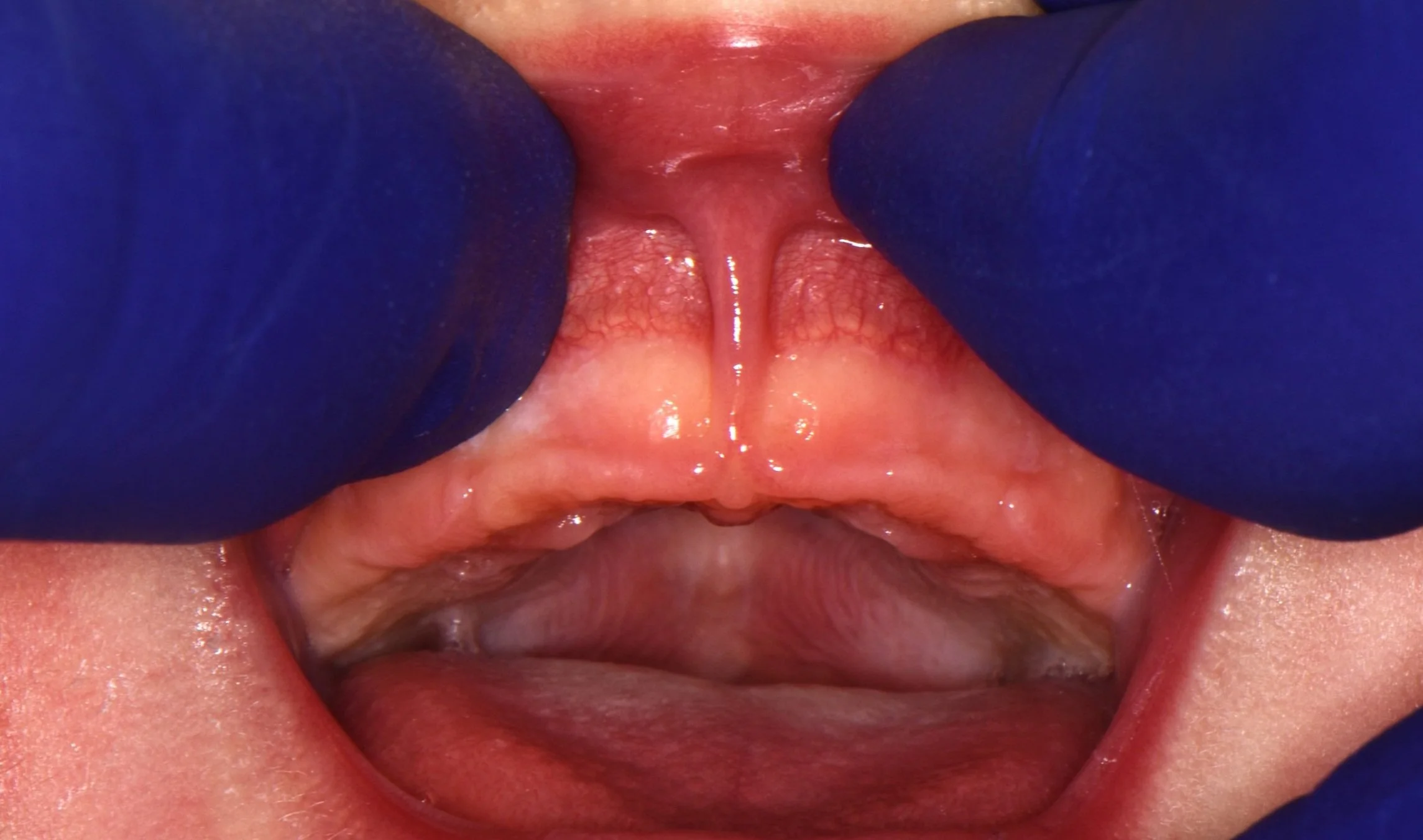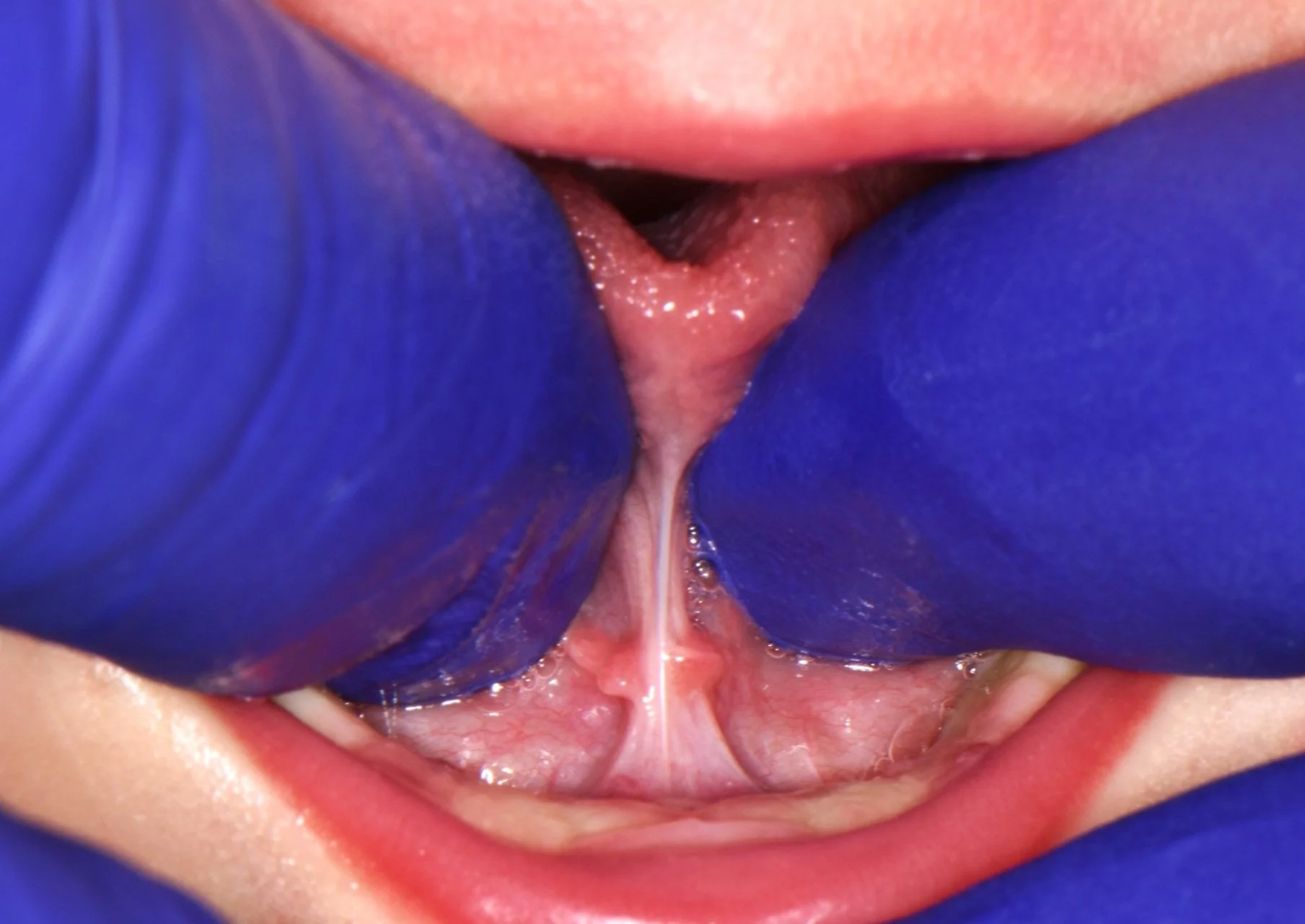Untethering the Secrets of Tongue and Lip Ties: A Three part letter to Moms
Dear Moms,
I’m a father of 2 beautiful young boys, aged 2 and now 1 month! Being their Daddy is one of my greatest joys – and most profound responsibilities. Any parent wants the best for their children, but as any new parent realizes – there’s no 5 step parenting manual for perfect parenting! My wife and I are far from perfect parents (who can relate??!) but we are constantly seeking guidance and learning more. The weight of responsibility often feels heaviest with health decisions for our little ones, especially when there’s a level of uncertainty involved.
At our dental practice, we see a ton of kids and I’m constantly talking with parents about the growth of their kids’ jaws and tooth development. I’ve done extensive research on what factors influence this development and how jaw development affects their overall well-being. I felt very comfortable with my perspective on these issues. BUT when my second son was born with a tongue and lip tie, the stakes got higher! I had the knowledge, but still felt a protective father’s anxiety over how to best help my little guy. And my wife and I wanted to learn more.
Our family
As our family navigated this journey, we doubled down on researching tongue and lip ties from all perspectives. Ultimately we decided it was best for our son to get his tongue tie and lip tie released, but along the way we learned a lot and talked with many other parents who were going through the same dilemma. In this three part series I’m going to share the insights we gained, particularly from a holistic perspective, to help empower you to make informed decisions for your own little one.
Part 1 defines a tongue or lip tie and discusses the associated risks
Part 2 describes our emotional journey as parents, the consultations we had, and ultimately the procedure itself
Part 3 describes what happens after the frenectomy – home care and healing process
**Disclaimer – I will not be advocating that every frenum get released. That decision is always made after first considering all the risk factors unique to your own child, from a multidisciplinary perspective. Just because frenectomies were the choice we made does not mean that’s the best route for your own child. I just want to share our experience. I hope it helps you and your family!
Part 1: The Hidden Risks of Untreated Tongue and Lip Ties
You may have heard the terms "tongue tie" or "lip tie", but what does this actually mean? Simply put, they are congenital conditions where a band of tissue known as the frenulum, or frenum, restricts the movement of the tongue or upper lip. In infants, these ties can affect their ability to breastfeed, causing pain and frustration for both mother and baby. This is how they are most often recognized, so it’s where we will begin:
Breastfeeding issues
For the baby, a tongue or lip tie can limit their ability to latch onto the breast effectively, leading to a shallow latch or painful nursing. This can lead to poor weight gain, frustration, and decreased milk ingestion. Also, infants with ties may experience excessive gas or colic due to swallowing air while feeding. As a result, the baby may not receive adequate nutrition and can become fussy or irritable, affecting their overall growth, development, and, as is often the frustration of new parents: poor sleep.
For the mother, breastfeeding a baby with a tongue or lip tie can be painful and frustrating. The improper latch and inefficient milk transfer can lead to cracked, sore nipples, mastitis, and a decreased milk supply. Mothers may become discouraged and stressed, impacting their overall well-being. Post partum recovery is hard enough without these issues!
Latch Differences
Notice the tongues ability to pull the nipple to the roof of the mouth and latch over the entire areola, versus the shallow latch and lesser milk flow in a tongue tie.
Image from DRGHAHERI.COM, a great resource to learn more.
But wait…
How do you know whether these symptoms are caused by a tongue and lip tie? Often there are actually many factors at play! Birth trauma, tight neck muscles, or fascia issues can also contribute to breastfeeding challenges. That's why seeking the expertise of professionals is so valuable. The first place any mom and baby should go when breastfeeding problems arise is an IBCLC (international board certified lactation consultant) and get their thoughts. An orofacial myologist, physical therapist, chiropractor’s opinion may also be valuable, and we sought all of these in our own journey. (notice- we did not only rely on my training and research as a dentist! A multi-disciplinary perspective is so critical.) These professionals can assess your child's overall orofacial development and help you identify any underlying issues that may be contributing to breastfeeding difficulties. They can also guide you in deciding whether a tongue and lip tie release procedure is necessary for your child.
Here are photos of my son’s ties. There are various ways to grade the severity of these ties- The consensus diagnosis for these would be Class 4 lip tie and Class 3 tongue tie in the other photo.
Other risks involved with tongue and lip ties are less obvious or can show up later in development.
Brain Development
One of the lesser-known but hugely important risks of untreated tongue and lip ties is their potential impact on brain development. The tongue plays a crucial role in the development of the oral and facial muscles, which, in turn influences the development of the cranial bones. If a tongue tie restricts a baby's ability to move their tongue freely, it can lead to altered oral motor patterns. The tongue is directly linked to the brain's sensory and motor regions, making it a critical player in a child's early cognitive development. It plays an indirect role in sleep quality as well.
Sleep Quality
This issue can show up right away in life! As parents, we all know the value of a good night's sleep for both our babies and ourselves. Sleep is crucial for growth and development, and tongue and lip ties can disrupt the harmony of bedtime. Aside from reflux and digestive troubles from poor feeding, tongue ties are highly associated with sleep-disordered breathing patterns in kids and adults. Improper tongue posture can lead to mouth breathing, which is associated with lessened sleep quality. In young children whose brains are developing so rapidly, this can have life-changing consequences. Not only is long term brain development and maturation compromised by poor sleep, but a child’s next-day behavior will be different too. Think of your child when they are tired. They’re probably more irritable, less obedient, more challenging, and despite poor rest are possibly even more energetic than normal. There’s a lot of thought that the poor sleep from mouth breathing has led to an increase in clinical diagnoses like ADHD in kids. I could write a ton more on this topic but am leaving it at that for the sake of (relative) brevity.
The bottom line is that the brain does not grow and develop optimally without proper sleep, and mouth breathing prevents proper sleep.
Respiratory and immune health
As kids grow, the inability to have ideal oral posture will also restrict the tongue’s ability to rest against the palate and naturally push the upper jaw out and forward. Since the upper jaw is the base of the nasal airway, the effect of a baby’s mouth-breathing snowballs into a narrow-palate teenager or adult who is all but forced to be a perpetual mouth breather! (Check out Napolean below!)
Nasal breathing provides a natural filtration system, humidifying and warming air before it reaches the lungs. This natural system is a huge part of our immunity against airborne viruses, bacteria, and other pollutants or allergens. Mouth breathing is also highly associated with sleep apnea in adulthood, which is strongly correlated with a host of other metabolic and psychiatric illnesses.
Attractive Jaw Development
Your child's smile is not just a charming feature but also a reflection of their overall oral and facial development. We’ve seen above that a tongue or lip tie can affect the oral posture of your child, which can lead to a series of esthetic issues. These include misaligned teeth, a narrow palate, and a slack jawed appearance. “Long face syndrome” distinguishes this pattern of growth from a wider, more defined and square jawline. See my friends Napolean and Superman below.
Compare Henry Cavill’s jaw development to Napolean Dynamite. Notice Napoleans longer and more narrow face/jaw structures and open mouth posture. You can note the bags under his eyes and the inattentive gaze. Cavill (Superman!) has a more defined, square jaw. His lips are shut as he nose breathes. I wonder if Napolean has a tongue tie!
The impact of these esthetic issues may not be immediately apparent, but they can manifest later in life. By addressing tongue and lip ties early on, you can promote healthy oral development and potentially prevent the need for orthodontic treatment in the future. This potentially saves time, money, and inconvenience for your child later in life during orthodontic treatment, and strongly contributes to a healthy, attractive jawline as an adult.
Speech Development: Untreated tongue and lip ties can impact speech development, because they restrict the movements of the tongue and lips. These conditions may lead to speech articulation problems, making it challenging for children to pronounce certain sounds correctly. The sequelae of restricted communication, reduced confidence, and possibly poorer academic performance “speak” for themselves (pun intended!) Speech language pathologists are a wonderful resource.
Beyond Breastfeeding: Seeking Professional Guidance
In conclusion, it's crucial for discerning parents like you to be aware of the hidden risks of untreated tongue and lip ties. These conditions can affect not only breastfeeding but also brain development, sleep quality, speech, and esthetic jaw development. By consulting with the right professionals you can address the root causes and make informed decisions for the well-being of your little ones.
As my own journey with my son's ties unfolded, we decided we wanted to address the root cause of all these issues, which in his case was the tongue tie and lip tie. But contemplating the frenectomy procedure for our little guy was hard! I’ll talk more about that in the next part of this series and explore the various alternative treatment options.
I’ve got a list of books and resources on this subject if you’d like to learn more! The list below is a good place to start. Please reach out with any questions.
Dr. Brayden Teuscher
References:
Smith R, et al. (2015) "Tongue-tie: the evidence for division and the significance of professional and parental attitudes." International Journal of Pediatric Otorhinolaryngology.
Geddes DT, et al. (2008) "Frenulotomy for breastfeeding infants with ankyloglossia: effect on milk removal and sucking mechanism as imaged by ultrasound." Pediatrics.
Guillemin M, et al. (2013) "Ankyloglossia as a risk factor for maxillary hypoplasia and temporomandibular joint dysfunction." The Angle Orthodontist.
Lowe A, et al. (2012) "Tongue tie and lip tie: evidence and response." Clinical Lactation.
Martinelli RL, et al. (2016) "Ankyloglossia: The adolescent and adult perspective." International Journal of Pediatric Otorhinolaryngology.
https://www.drghaheri.com/blog
BOOKS BELOW
Walker, M. (2017). Why We Sleep: Unlocking the Power of Sleep and Dreams. Scribner.
Moore, S. (2018). Sleep Wrecked Kids: Helping Parents Raise Happy, Healthy Kids, One Sleep at a Time. Grammar Factory
Nestor, J. (2020). Breath: The New Science of a Lost Art. Riverhead Books.
Buchanan, S. (2019). Jaws: The Story of a Hidden Epidemic. Chelsea Green Publishing.
Gelb, M., & Howley, H. (2019). Gasp: Airway Health - The Hidden Path to Wellness. HarperOne.
McKeown, P. (2015). The Oxygen Advantage: The Simple, Scientifically Proven Breathing Techniques for a Healthier, Slimmer, Faster, and Fitter You. William Morrow.






